Einstein's early work on E=mc2
On a Beam of Light: The Story of Albert Einstein, Illustrated by the Great Vladimir Radunsky
by Maria Popova
The charming visual tale of an introverted little boy who grew up to become the quintessential modern genius.
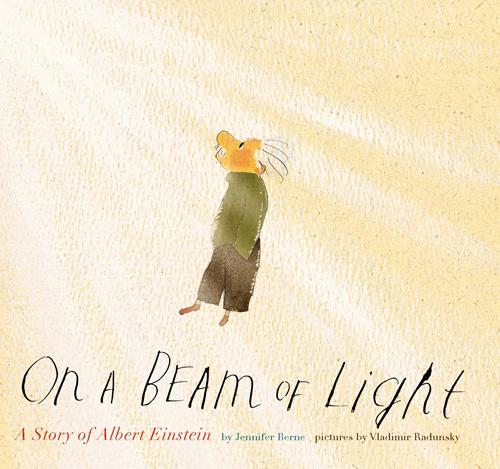 Given my soft spot for picture-book and graphic-novel accounts of famous lives, including Charles Darwin, Julia Child,Hunter S. Thompson, Richard Feynman,Ella Fitzgerald, and Steve Jobs, I was instantly taken with On a Beam of Light: A Story of Albert Einstein (public library). Written by Jennifer Berne and illustrated by none other than Vladimir Radunsky— the same magnificent talent who brought young Mark Twain’s irreverentAdvice to Little Girls back to life in 2013, which topped the list of the year’s best children’s books and was among the year’s best books overall. This charming picture-book tells the tale of how an unusual and awkward child blossomed into becoming “the quintessential modern genius” by the sheer virtue of his unrelenting curiosity.
Given my soft spot for picture-book and graphic-novel accounts of famous lives, including Charles Darwin, Julia Child,Hunter S. Thompson, Richard Feynman,Ella Fitzgerald, and Steve Jobs, I was instantly taken with On a Beam of Light: A Story of Albert Einstein (public library). Written by Jennifer Berne and illustrated by none other than Vladimir Radunsky— the same magnificent talent who brought young Mark Twain’s irreverentAdvice to Little Girls back to life in 2013, which topped the list of the year’s best children’s books and was among the year’s best books overall. This charming picture-book tells the tale of how an unusual and awkward child blossomed into becoming “the quintessential modern genius” by the sheer virtue of his unrelenting curiosity.
The story begins with Albert’s birth — a beautiful but odd baby boy who turns one and doesn’t say a word, turns two, then three, and nary a word.
Instead, he “just looked around with his big curious eyes,” wondering about the world. His parents worried that there might be something wrong, but loved him unconditionally. And then:
One day, when Albert was sick in bed, his father brought him a compass — a small round case with a magnetic needle inside. No matter which way Albert turned the compass, the needle always pointed north, as if held by an invisible hand. Albert was so amazed his body trembled.Suddenly, he knew there were mysteries in the world — hidden and silent, unknown and unseen. He wanted, more than anything, to understand those mysteries.
This was that pivotal spark of curiosity that catapulted his young mind into a lifetime of exploring those mysteries. (One can’t help but wonder whether a similar child, today, would have a similar awakening of mind while beholding a smartphone’s fully automated GPS map. But, perhaps, that modern child would be developing a wholly different type of intelligence.)
Young Albert began asking countless questions at home and at school — so much so, that his teachers chastised him for being a disturbance, admonishing the little boy that he would get nowhere in life unless he learned to follow the rules and behave like the other kids. And yet the mysteries of the universe drew Albert deeper into inquiry.
One day, while riding his bicycle, he gazes at the rays of sunlight beaming from the Sun to the Earth and wonders what it would be like to ride on them, transporting himself into that fantasy:
It was the biggest, most exciting thought Albert had ever had. And it filled his mind with questions.
So he set out to answer them by burying himself in books, reading and discovering the poetry of numbers, that special secret language for decoding the mysteries of the universe.
Once he graduated from college, unable to find a teaching position, he settled for a low-key, quiet government job that allowed him to spend plenty of time with his thoughts and his mathematical explorations, pondering the everyday enigmas of life, until his thoughts coalesced into ideas that made sense of it all — ideas about atoms and motion and space and time. Soon, Albert became an internationally celebrated man of genius.
But with that came the necessary amount of eccentricity — or at least what seemed eccentric from the outside, but is in fact a vital part of any creative mind. Albert, for instance, liked to play his violin when he was having a hard time solving a particularly tricky problem — a perfect way to engage theincubation stage of the creative process, wherein the mind, engulfed in unconscious processing, makes “no effort of a direct nature” in order to later arrive at “sudden illumination.”
Some of his habits, however, were decidedly, and charmingly, quirky: He regularly wandered around town eating an ice-cream cone, and he preferred to wear no socks — not because he tried to be a pseudo-nonconformist, but because he “even chose his clothes for thinking,” often clad in his signature “comfy, old saggy-baggy sweaters and pants.”
Still, everywhere he went, he remained mesmerized by the mysteries of the universe, and the echoes of his thoughts framed much of our modern understanding of the world:
Albert’s ideas helped build spaceships and satellites that travel to the moon and beyond. His thinking helped us understand the universe as no one ever had before.
And yet the central message of this altogether wonderful picture-book is that despite his genius — or, perhaps, precisely because of it — Einstein’s greatest legacy to us isn’t all the answers he bequeathed but all the open questions he left for today’s young minds to grow up pondering. Because, after all, it is“thoroughly conscious ignorance” that drives science and our understanding of life.
The final spread, reminiscent of these illustrated morphologies of Susan Sontag’s favorite things and Ronald Barthes’s likes and dislikes, captures Einstein’s life in eight essentials:
Complement On a Beam of Light with Einstein on why we are alive, on science vs. religion, and his timelessly encouraging words to women in science in this letter to a little girl who wanted to be a scientist.

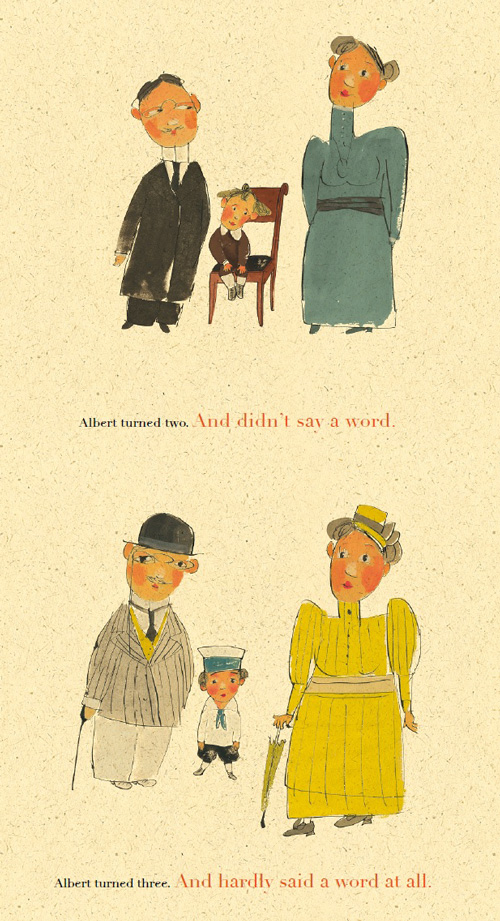
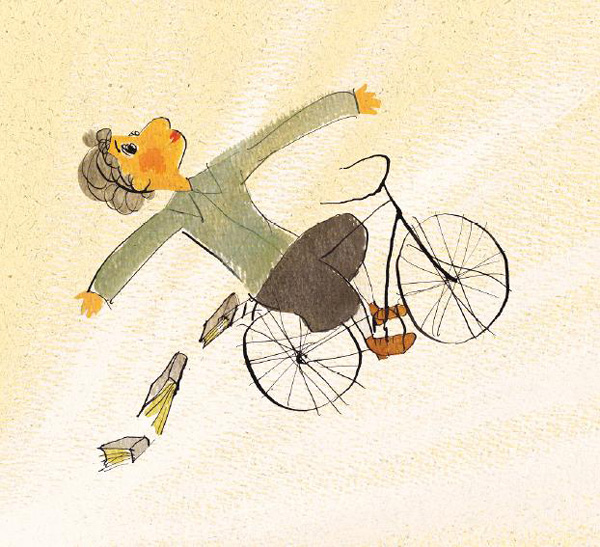
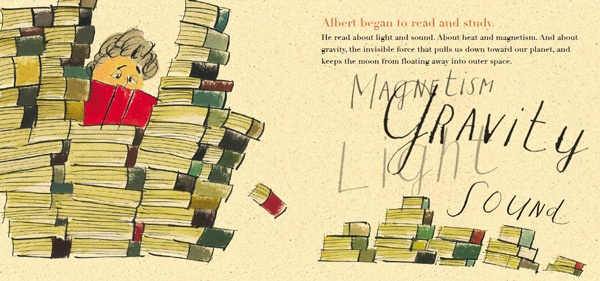
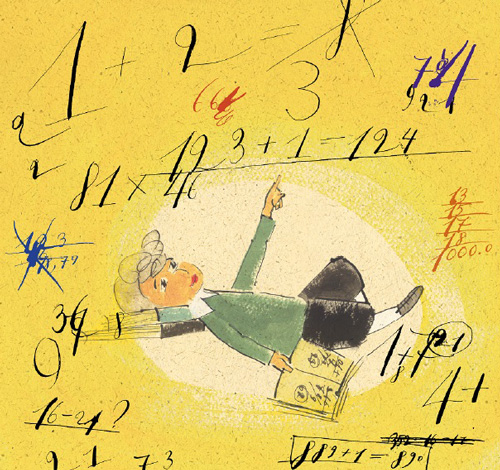
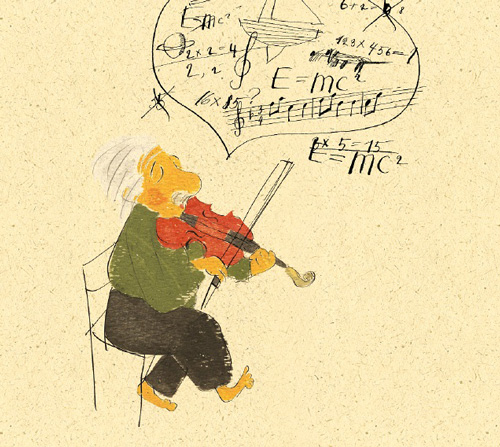
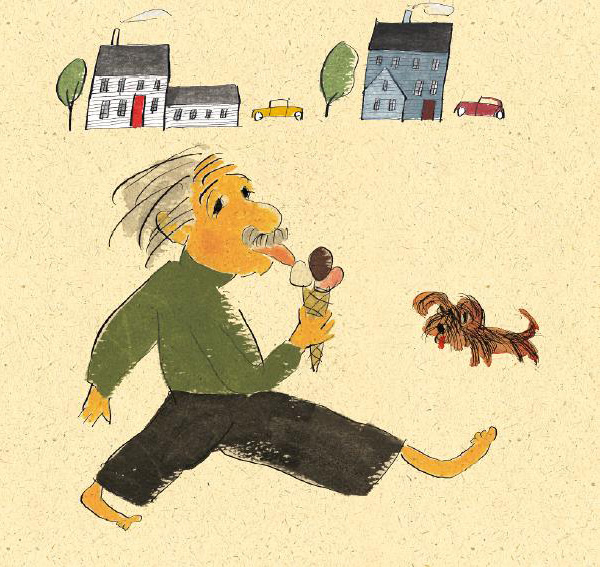
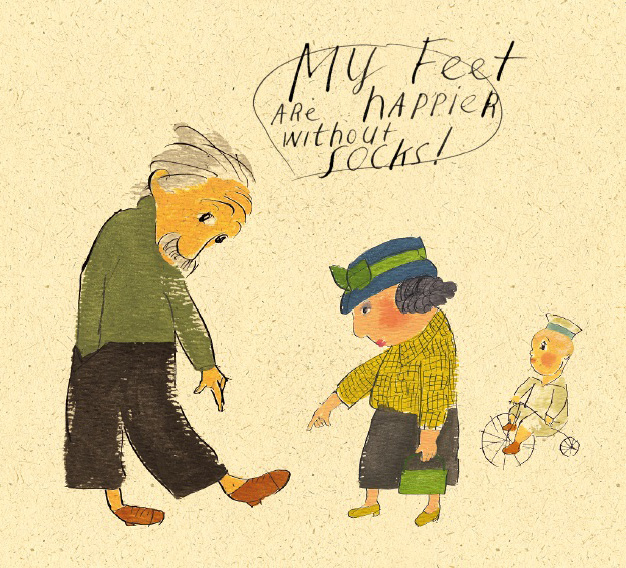
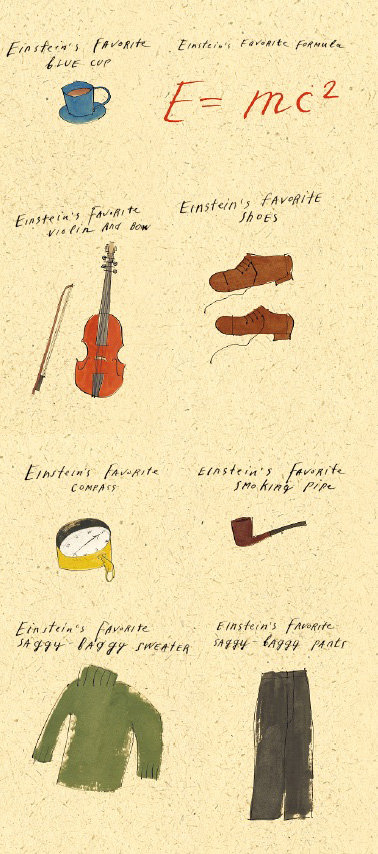
No comments:
Post a Comment